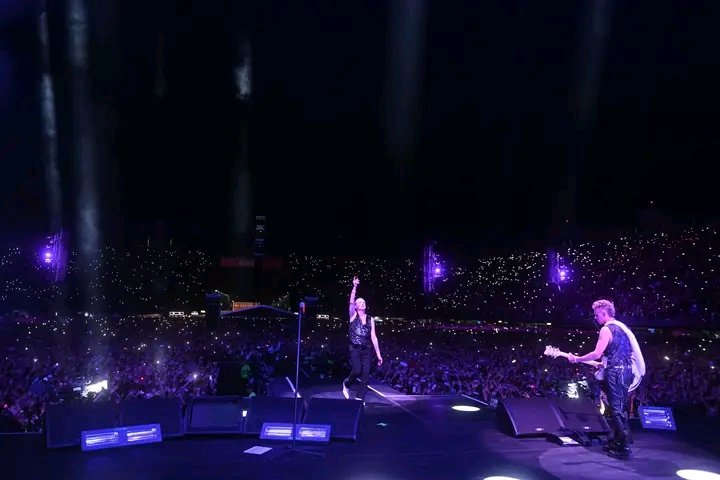In the heart of Mexico City, a city that pulses with life even as it reveres the dead, a remarkable convergence of sound, soul, and storytelling unfolded in 2023. Depeche Mode, the iconic British synth-pop pioneers, performed three sold-out shows at the city’s Foro Sol stadium, igniting a cultural moment that transcended music. Capturing this powerful experience is an upcoming film by award-winning Mexican director Fernando Frias, known for his poignant visual storytelling in works like I’m No Longer Here (Ya no estoy aquí). In this new film, Frias dives deep into the resonance between Depeche Mode’s latest album Memento Mori and Mexico’s enduring relationship with death, offering a rich, sensory meditation on grief, memory, and spiritual continuity.
Fernando Frias has long been celebrated for his ability to bridge the personal with the political, the local with the universal. His lens often captures the vibrant pulse of Mexican youth culture and its intersections with identity, migration, and existential yearning. In Memento Mori: En Vivo en la Ciudad de la Muerte, Frias turns his gaze toward Depeche Mode, whose 2023 album Memento Mori—Latin for “Remember you must die”—explores themes of mortality, loss, and reflection, particularly in the wake of founding member Andy Fletcher’s death in 2022.
Rather than crafting a straightforward concert film, Frias weaves together live footage from the band’s Mexico City performances with intimate interviews, abstract interludes, and immersive vignettes from Mexican life. The result is not merely a documentary but a cinematic ritual, where music and culture intertwine to mourn, celebrate, and contemplate the transience of life.
Depeche Mode’s Mexico City concerts were more than just performances—they were communal ceremonies. Over 200,000 fans filled the open-air venue across the three nights, singing along with near-religious fervor. Songs like “Ghosts Again,” “My Favourite Stranger,” and “Never Let Me Down Again” resonated through the crowd like hymns in a cathedral, underscored by the band’s signature fusion of electronic melancholy and raw emotional power.
Frias’ camera captures not only the band’s onstage presence but the profound expressions of the audience—tears, embraces, painted faces, candles held aloft. These are not just fans but participants in a collective acknowledgment of mortality, resilience, and remembrance. For Frias, the scenes serve as a mirror to Mexico’s deep cultural embrace of death as a sacred passage rather than a final end.
“Memento Mori” and the Mexican View of Death
In Mexico, death is not shunned—it is invited to the table. It is laughed with, danced with, and honored annually in the vibrant rituals of Día de los Muertos. This cultural ethos is reflected in Frias’ visual storytelling, which juxtaposes scenes from Depeche Mode’s darkly poetic performances with images of street altars, family cemeteries, sugar skulls, and the omnipresent marigolds that guide the spirits of the departed home.
The themes of Memento Mori—grieving lost loved ones, accepting the inevitability of death, and finding light in the shadow of mortality—echo with particular poignancy in Mexican cultural traditions. Frias explores this resonance not as a coincidence, but as a natural harmony between artist and audience, between European existentialism and Mexican mysticism.
The film also provides a subtle commentary on the universality of grief and the ways it manifests across borders. With the global traumas of recent years—pandemics, political unrest, climate anxiety—death has become a more tangible presence in daily life. Yet, Memento Mori and Frias’ visual treatment offer an alternative to despair: a language of mourning that is colorful, musical, and profoundly human.
Interviews with Mexican artists, philosophers, and fans interspersed throughout the film provide insight into how the themes of the album are internalized in a society that does not hide from death, but converses with it. These segments are some of the film’s most affecting moments, grounding the lofty aesthetics in lived experience and cultural knowledge.
Ultimately, Frias’ film defies easy categorization. It is part concert film, part ethnographic study, part spiritual essay. It invites audiences to reflect not only on the power of Depeche Mode’s music but also on their own relationship to impermanence. It is a cinematic memento mori in itself, urging viewers not to fear death, but to live more meaningfully in its shadow.
In blending the haunting sonics of Memento Mori with the vibrancy and ritual of Mexican culture, Frias has created a work that is at once deeply personal and expansively global. As the final chords of “Walking in My Shoes” fade beneath the golden glow of a Mexico City sunset, one is left not with sorrow, but with a profound sense of connection—to music, to culture, and to the inevitable, beautiful transience of life.
